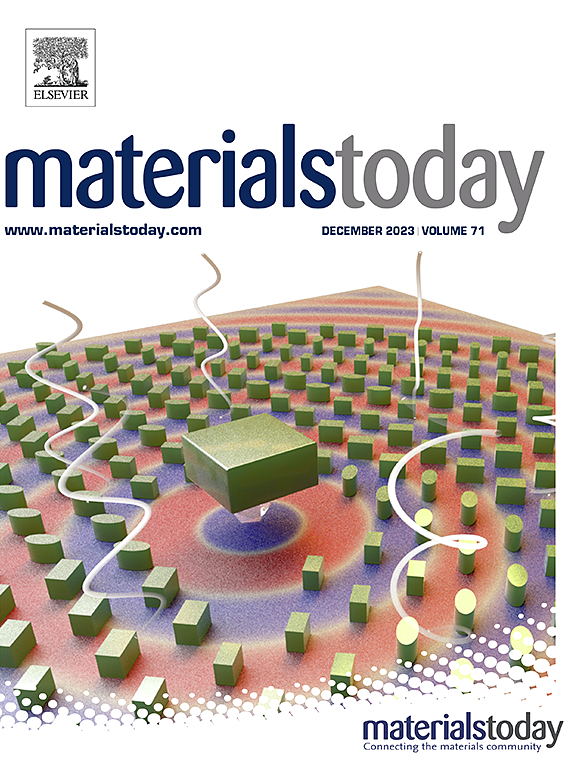Additively manufactured liquid metal–based piezoresistive device with dual functions of force sensing and mechanical energy absorption
IF 21.1
1区 材料科学
Q1 MATERIALS SCIENCE, MULTIDISCIPLINARY
引用次数: 0
Abstract
Although liquid metals are renowned for their exceptional stimulus-responsive properties, their potential for functionalization remains constrained when relying solely on simple deformations. Recent progress in additive manufacturing has enabled the simultaneous programming of both materials and structures, facilitating the development of various functional devices based on liquid metals. However, these devices typically exhibit only a single functionality. This work proposes an approach for the fabrication of multi-functional devices by uniformly coating GaIn liquid metal onto the surface of lattice structures produced via laser powder bed fusion. The resulting flexible piezoresistive device not only responds to pressure by altering its resistance but also exhibits significant mechanical energy absorption capabilities. Through comprehensive analysis of the device’s sensing performance and resistance variation during structural densification, we observed outstanding characteristics, including high sensitivity, a rapid response time of 58 ms, a maximum mechanical energy absorption capacity of 40.1 kJ·m−3, and a cycle life exceeding 12,000 cycles. Notably, a sudden change in resistance consistently occurs during the lattice structure’s densification process, making the device highly effective for protecting delicate components. This work extends beyond the intrinsic stimulus-responsive characteristics of liquid metals, presenting a strategy in the design and manufacturing of piezoresistive devices through material and structural innovation, with promising potential for a wide array of applications.

增材制造具有力传感和机械能吸收双重功能的液态金属压阻器件
尽管液态金属以其特殊的刺激响应特性而闻名,但当仅仅依赖于简单的变形时,它们的功能化潜力仍然受到限制。增材制造的最新进展使材料和结构的同时编程成为可能,促进了基于液态金属的各种功能器件的发展。然而,这些设备通常只展示一种功能。本研究提出了一种将液态金属均匀涂覆在激光粉末床熔合晶格结构表面的多功能器件制造方法。由此产生的柔性压阻器件不仅通过改变其电阻来响应压力,而且表现出显著的机械能吸收能力。通过对器件在结构致密化过程中的传感性能和电阻变化的综合分析,我们观察到器件具有高灵敏度、快速响应时间为58 ms、最大机械能吸收能力为40.1 kJ·m−3、循环寿命超过12,000次等突出特点。值得注意的是,在晶格结构的致密化过程中,电阻的突然变化一直发生,这使得该设备非常有效地保护了脆弱的部件。这项工作超越了液态金属固有的刺激响应特性,通过材料和结构创新,提出了一种设计和制造压阻器件的策略,具有广泛应用的潜力。
本文章由计算机程序翻译,如有差异,请以英文原文为准。
求助全文
约1分钟内获得全文
求助全文
来源期刊

Materials Today
工程技术-材料科学:综合
CiteScore
36.30
自引率
1.20%
发文量
237
审稿时长
23 days
期刊介绍:
Materials Today is the leading journal in the Materials Today family, focusing on the latest and most impactful work in the materials science community. With a reputation for excellence in news and reviews, the journal has now expanded its coverage to include original research and aims to be at the forefront of the field.
We welcome comprehensive articles, short communications, and review articles from established leaders in the rapidly evolving fields of materials science and related disciplines. We strive to provide authors with rigorous peer review, fast publication, and maximum exposure for their work. While we only accept the most significant manuscripts, our speedy evaluation process ensures that there are no unnecessary publication delays.
 求助内容:
求助内容: 应助结果提醒方式:
应助结果提醒方式:


